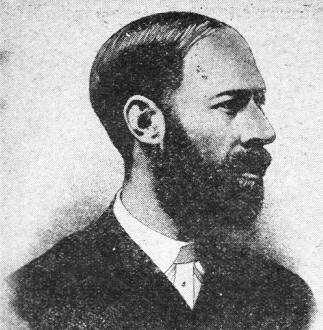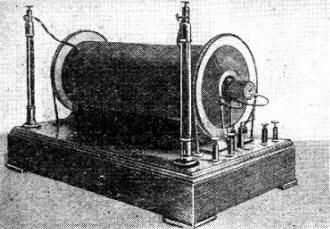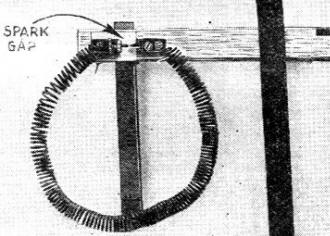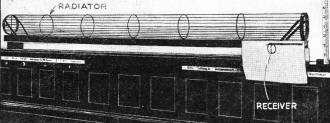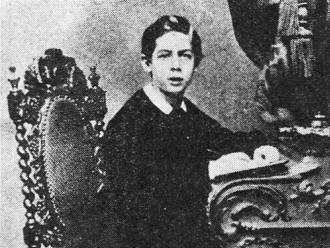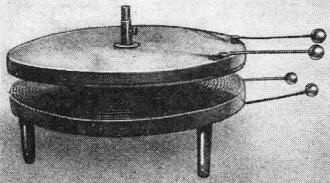Heinrich Hertz Proves Existence of Radio Waves - 50 Years Ago!
|
|
Well... anyway it was 50 years ago referenced to the year this story was published in the 1937 issue of Radio-Craft magazine. That makes it 85 years ago referenced to 2022. The story's point is that half a century had passed already since the confirmation of existence of electromagnetic (EM) waves as proposed by James Clerk Maxwell. Heinrich Hertz's "Funken-Induktor" (spark inductor) and his "Knochenhauershen Scheiben" (Karl-Wilhelm Knochenhauer's disk-type capacitors) were key to Hertz's ability to generate, transmit, and receive EM energy. The work originated from attempts to prove that light was a form of electromagnetic waves. BTW: Does anyone know what appending "shen" to the end of a name means; i.e., "Knochenhauershen?" Heinrich Hertz Proves Existence of Radio Waves - 50 Years Ago Having demonstrated, in 1887, the existence of the electromagnetic variations (forecast by Maxwell) which we today call radio waves he modestly wrote: "It is not for me to say whether the discovery I have made is truly wonderful, but it makes me very happy to know that other people say so." The great Helmholtz said - when a successor to Hertz in the Chair of Physics at Bonn University was wanted - of his pupil: "There exists no rule under which a man of genius should be replaced by another in his own specialty." Hertz was born in Hamburg, Germany, The turning of the third-quarter of the last century found scientists and other learned people preoccupied with the bewildering question "What is Light?" Various theories had been expounded without having satisfactory basis in fact or without having sufficient proof. At last in 1875 Clerk Maxwell asserted that light was the result of oscillations produced by an electromagnetic field existing somewhere in space and manifesting itself in the form of waves. Furthermore, he added, and proved mathematically that what was true for light was equally true for electricity. Whether or not Maxwell's theory was good remained to be proven. Funken-Induktor: Spark produced by this spark inductor or induction coil. World's first "radio receiving station" Complete sending and receiving station of the '80's! Schoolboy Hertz in 1865. The "Knochenhauershen Scheiben" Heinrich Hertz was the man who by his extraordinary experiments succeeded in demonstrating the truth of this theory thereby laying the basis for future experiments in electromagnetic waves and wireless (radio) communication. He started with the principle in mind that all electric waves resulting from rapid electric oscillations could be propagated into the air in the same way as sound waves could be generated and propagated by causing a string or diaphragm to vibrate. He surmised correctly that electric waves had tremendous speed and vibrated at a terrific rate since they could be received, like light vibrations, at a distance from the place from whence they issued. Hertz obtained his inspirations for his experiments from these various theories. He managed to produce electromagnetic waves with the simple apparatus here illustrated. Close examination of this apparatus in its fundamental aspects (the use of coils, condensers, etc.) reveals that it differs only in method (not in principle) from the present-day system of producing electromagnetic waves. Little did Hertz realize then that these same waves later on would be the instrumentality through which all the nations on the earth would be linked together more closely than by any other means. Physicists and radio engineers the world over in celebrating, this year, the 50th anniversary of his successful experiment, acclaim his achievement in those early experiments and honor his memory. The spark produced by this spark inductor or induction coil, Hertz found, radiated emanations the presence of which were capable of manifesting themselves at a distant point without the use of intervening wires or any other apparent means of direct connection. (Actually, the ether joined the sending and receiving "stations."). World's first "radio receiving station" - and it is a short-wave (6-meter) set, at that! High self-inductance and capacity were obtained by winding wire into a compact spiral placed near the "sender"; the 2 terminals then were brought sufficiently close together to permit a spark to jump the gap. Having found that a single piece of wire bent into the shape of a closed loop would spark-across at the gap when brought into the field of influence of a sparkcoil Hertz next tried increasing the effectiveness of the sparkcoil as a "sender" by connecting to its high-voltage terminals conductors having increasingly large area. Professor Hertz thus came to evolve among other types of antennas a long, tubular radiator consisting of parallel wires held in position by hoops. Brought up in the highly intellectual atmosphere surrounding his father, a Jewish high magistrate, young Hertz at an early age exhibited exceptional interest in broad fields of learning (such as studying Greek classics in the original text, etc.) that helped develop his breadth of vision. This "distributor of capacity" or fixed condenser (literal translation from the German) played an important part in the laboratory work of Heinrich Hertz. The device was made by winding 2 parallel wires, insulated from each other, to form a resonant circuit having high C/L ratio. Two such "pies" are shown. (Photos-R.P.S., Paris)
Posted December 26, 2022 |
|

